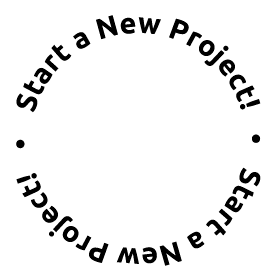What is Lead Gen? Does your Business Need it? & How to do it! (Updated for 2022)
Running a business is challenging, regardless of how established, profitable, or large your business is. Large multinational organizations operating across the world have problems befitting their size and reach, and new small businesses fighting to establish a reputation and carve a share in the market are forced to do “the impossible” on a shoe-string budget.
Limited resources and budgets are a fact of life in business. Even the largest, most profitable companies plan-ahead, calculate returns and opportunity costs, and make hard decisions on allocating budget and spending resources.
It’s no secret that the odds are stacked against new companies. According to Investopedia, up to half of new businesses fail within three years, and the single most contributing factor to their demise is financial, i.e. running out of money. Considering these new companies cannot rely on word of mouth, referrals, and their reputation just yet, and with money scarce and sales still low, investing in quality lead generation seems like a no-brainer.
Do all businesses need Lead Generation?
Lead Generation is how a business attracts its target market’s attention.
So, can any business survive without interest in their products or services? The short answer is No.
The longer answer is, No business can survive without customers, making lead Generation not just essential but a matter of life and death for any business.
Lead Generation is critical for Businesses. Especially Small to Medium-sized companies that are still establishing their reputation and require more leads and proof of work than other already established businesses. But Lead Generation can also be daunting and time-consuming when done in-house and costly when outsourced without budgeting and planning for it.
“You Got to Spend Money to Make Money”
Most businesses calculate their marketing budgets as a percentage of their total turnover. Depending on the type of business, its industry, sector, niche, size, location and various other contributing factors, on average companies should invest between 10% to 25% of their total turnover in Marketing.
Now that the constant need for lead generation has been established, it’s imperative before any money is invested, thorough planning is done. As the saying goes, “If you fail to plan, you plan to fail”.
The most urgent requirement for any lead generation campaign or strategy is not budget, it’s knowing your business inside out.
1) Identify your Target Market.
2) Define what makes you different.
3) Understand what specific customer pain points your product or service solves.
4) Create Accurate User Personas.
Don’t get us wrong; the budget is also a VERY important contributing factor. If the cost of acquiring a new lead (Lead Acquisition Cost or Cost/Lead) is unaffordable or unsustainable, your new leads are not growing your business, they could be leading to your insolvency.
Before we discuss the various methods for Generating Leads, it’s essential we first understand the general nature of the term “Leads”.
In our blog article titled “What is a Marketing Funnel”, we discussed the six stages of the Marketing (or Purchasing) Process (or Funnel) and every stage’s main goals, Do’s and Do Not’s. In the article, we discussed how some stages of the Marketing Funnel, such as Awareness, requires more work than the Consideration stage due to it being further away from the end of the cycle, so it’s only natural we consider the leads in the Awareness stage as less quality than those in the Consideration stage because they require more work/investment to complete the cycle.
So without any further ado, let’s examine the different methods and strategies for Lead Generation.
1. Optimize your Digital Footprint.
Your digital footprint is another phrase for your online presence. It comprises of your website, social media profiles, blogs, online directories, search engine listings, and any other touchpoint or platform that lists or displays information about your business, products, or services.
Optimizing your digital footprint begins by ensuring all touchpoints are consistent in their messaging, designs, tone of voice etc. Furthermore, all your touchpoints MUST include a clear Call to Action. It MUST have a clear, simple, easy to understand path to more information about you, your products or services, and the most important of all, an easy way to convert (either subscribe, purchase or get in touch, depending on your KPI’s and goals).
2. Create value-based & humancentric content
Blogs. Articles. Videos. Podcasts. Infographics. Social Media Posts.
Knowing your target market thoroughly allows you to understand what type of content they appreciate and consistently deliver that content for their enjoyment and/or benefit. This establishes you as an expert in that sector or niche and could potentially reward you with a conversion.
In today’s SEO obsessed world of algorithms and the countless attempts to fool the system and “hack growth”, many marketers forgot the golden rule. They started creating content for the sole purpose of “ranking”, i.e. content aimed at Google’s bots. This content is always thin in value, any short-term gains in the ranking are almost always corrected in the following algorithm update, and the only content that has always been rewarded, and most probably will always be rewarded is the content that offers real value to the users and has them coming back for more.
3. Referrals. Referrals. Referrals.
Referrals are a lead-generating goldmine. Not only do they increase your brand awareness and reach, but they also increase trust and alleviate doubt by providing proof of work to new customers.
Another point of strength for referrals is the fact that people often refer close acquaintances (friends, family, business associates etc.), and any established trust between the referrer (person referring) and the referee (person being referred) is passed on to you.
Remember, nothing in this industry is free, so consider rewarding both the referrer and the referee.
4. Test your Calls to Action.
A CTA (or Call to Action) is a prompt capturing the user’s attention and urging them to take action. CTA’s must be short on words, big on impact. CTA’s are not an exact science. They are heavily influenced by audience types, personalities, use-cases etc., so consider A/B testing or Split Testing your Calls to Action to ensure the copy, design and location of the CTA are all ideal and offer the best impact.
Marketers can often make educated guesses, they create user personas based on a deep understanding of your target market obtained after conducting some level of research. Still, it’s impossible to accurately guess how a message will resonate unless you test it. When it comes to your business, never assume, always test.
5. User-Generated Content (UGC).
UGC is any content, for example, pictures, reviews, videos, audio clips, blog posts, Q&A sessions, live-streaming an event (to name a few) made and shared by users, either on their Private Channels(personal blog, website or social media account), Specialized Platforms (review websites, review apps) or submitted by the user to the business for sharing on their channels. In other words, UGC is “Word of Mouth” marketing on steroids.
User-generated content are a lead generating treasure trove. They’re not only free publicity for your business, but consumers also consider them as a more authentic form of marketing which helps in lessening doubt for on the fence customers and increase trust and loyalty amongst existing users.
6. Host Training events.
Whether you’re hosting a live event or a virtual webinar, training events are a great way to demonstrate your prowess and knowledge about a subject. Training events also help establish trust, they alleviate doubt and reduce hesitancy from new clients to get in touch.
Training can cover either your products or services, user guides, tutorials, use-cases, and they can also cover a subject related to your products or services directly. For example, if a camera manufacturer wanted to host a training event, they could offer courses on how to use their cameras or make a general photography course. Both offerings have advantages and disadvantages. The first could increase loyalty and potentially increase referrals and user-generated content (happy customers share their positive experiences). The latter could increase reach and market share by converting the competition’s customers.
Key points to remember when Hosting a Training Event, whether it’s a webinar or in-person. 1) Attendance is a potential challenge, so consider rewarding attendees with a high-value offer or bonus at the end. 2) Send periodic reminders and give an idea of what to expect, highlight any advantages such as networking and/or the bonus and imply a sense of urgency by making spaces limited. 3) Avoid selling anything in the early stages of the training event.
7. Offer a Trial Period or a Tester:
Free trials (or testers) have been with us for as long as trade existed. The psychological incentive to try something new without losing anything is powerful.
Marketers have constantly explored methods to offer Samples or Free Trials, from sending out free sample coupons in catalogues to including samples in magazine ads and distributing free samples in supermarkets. With the birth of the internet and the digital world, and the launch of digital products and services, Free Samples/Trials levelled up. It became almost effortless to offer trial periods (free or limited) to entice new customers or encourage existing customers to subscribe to a higher membership tier or purchase additional products or services.
While the advantages for offering a free trial are many and include:
1) Easing commitment fears for on-the-fence customers 2) Builds your mailing list 3) Increases user testing and provides a good source of feedback 4) Establishes your generosity 5) Free Publicity through word of mouth, referrals and UGC.
The potential disadvantages can include:
1) High financial investment without a guarantee of a purchase
2) Any quality issues will become public, potentially harming your reputation.
3) Loss of earning due to people trying to cheat.
4) Labour intensive.
8. PPC Advertising (Pay Per Click) for Lead Generation.
PPC or Pay Per Click Advertising is a pricing model exclusively used on the internet. Its primary purpose is to drive traffic to a website. Advertisers bid for the top spot and only pay when the user clicks on the link.
PPC Advertising gives you the ability to Instantly appear at the top of the searches for any keywords related to your business, expanding your reach considerably and connecting you with customers with a search intent related to you.
While organic SEO is a painstakingly long process, PPC advertising’s main advantage is that you can set up a campaign and appear at the top of the searches within days of launching your business. You can also create campaigns with different keywords, CTA’s and landing pages depending on the various stages of the Marketing Funnel. ROI is easily tracked and calculated. Analytics and data advantages.
9. Create a Video discussing your ideal client
There’s very little in marketing that can match the impact of a video or offer similar engagement or conversion figures. Videos grab attention, they hold attention better and are considerably better at motivating a decision and inspiring action.
Creating informative videos discussing your ideal client, the problems they’re facing and how you can help them are a sure way to grow your business and generate new, quality leads in your target market.
10. Spend time with your audience online
It all begins with clearly identifying your target market. Then use research to find out where they spend the most time online, Facebook groups, Twitter Spaces, Clubhouse Rooms, Reddit subreddits, Hashtags, Forums, Directory websites; the list is endless; it can be one platform or several. Once the target market hangout spot has been identified, avoid selling directly in the beginning or even later, instead be helpful and offer value by answering questions, sharing articles written by you, as well as other articles of interest to the group, providing constructive feedback and advice (when asked) it’s time-consuming, but so is anything worth doing.
We hope you enjoyed this article discussing the best Lead Generation techniques and best practices for the year 2022 and onwards. Lead Generation can be costly, time-consuming, or both, which is why it requires planning ahead and constant monitoring because when you ignore Lead Generation, you ignore growth.
If you need help executing these strategies, or if you would like to discuss your business in-depth and what lead generation strategies are available to you, we at Yasmeen Creative would LOVE to help. Get in touch! Let’s set you up for your future success today.


 BACK TO BLOGS
BACK TO BLOGS

